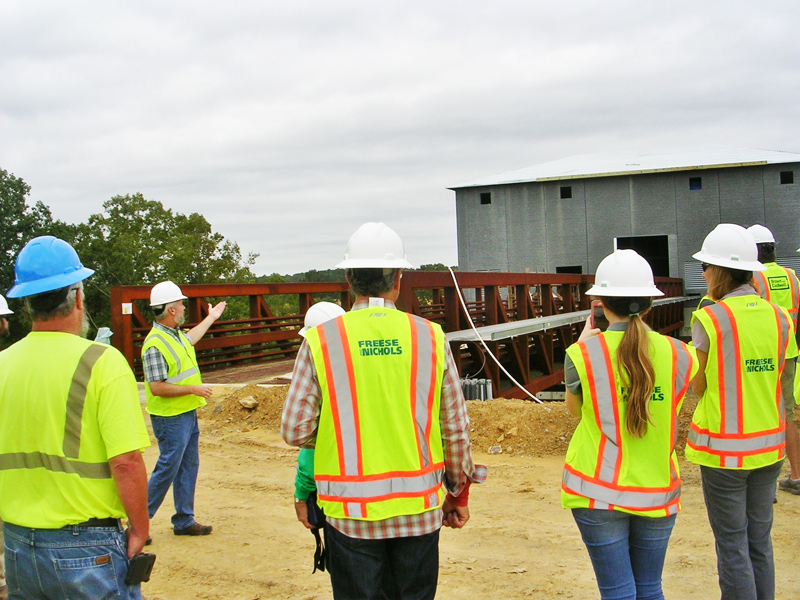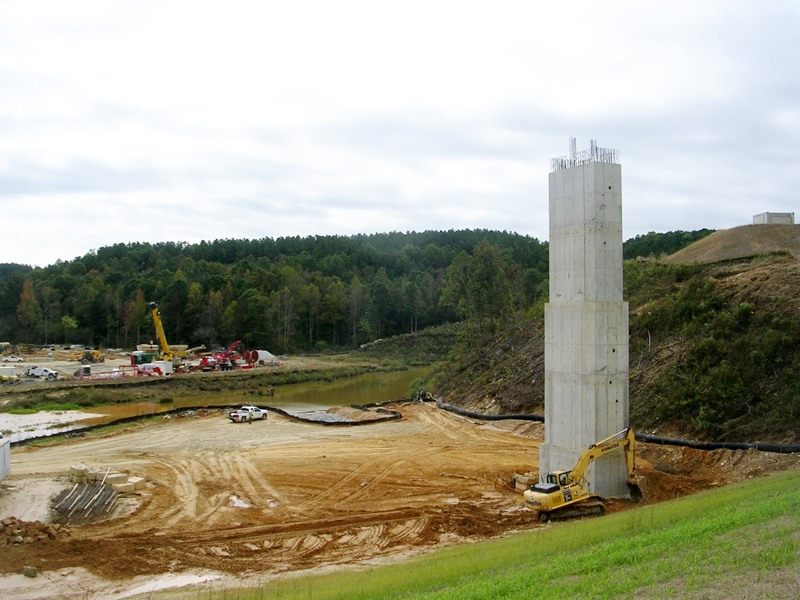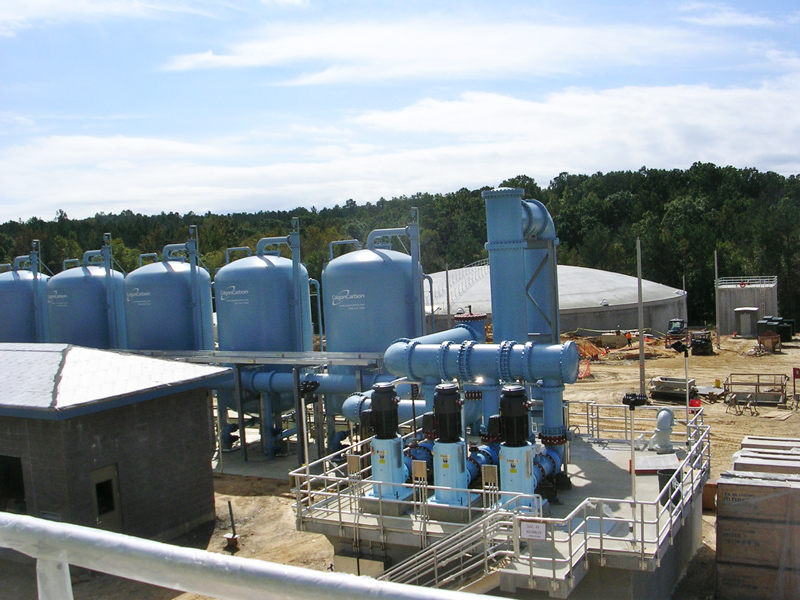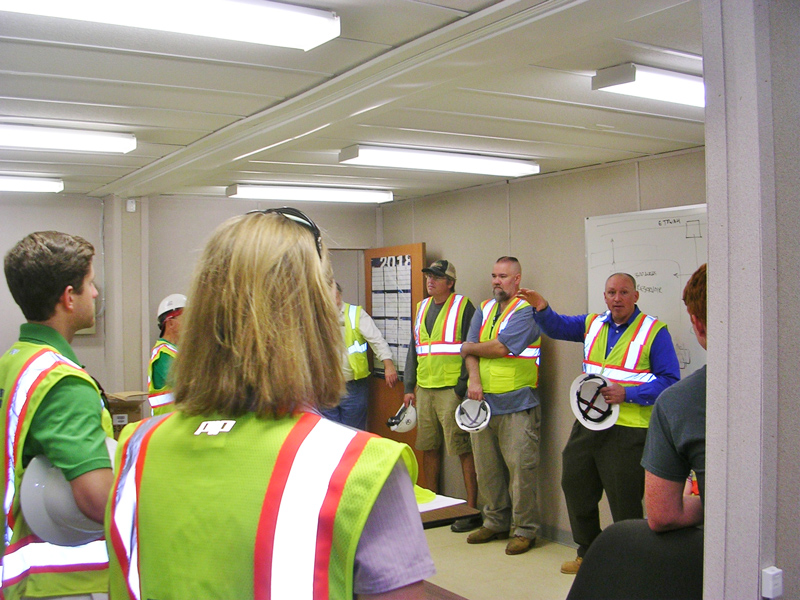Richland Creek Reservoir Project Staff Conduct Site Tours



 Brown and Caldwell’s Kelly Comstock, a managing consultant on Paulding’s Richland Creek reservoir project, along with site engineers conducted tours of the water treatment plant (WTP), intake, and Dam on last week. Visitors signed-up for the 100 slots available. The RCR is located on approximately 700-acres of county-owned land in northern Paulding County, in the Post 4 district. The facility will provide the 36 million gallons of water a day the county is projected to use, Comstock said.
Brown and Caldwell’s Kelly Comstock, a managing consultant on Paulding’s Richland Creek reservoir project, along with site engineers conducted tours of the water treatment plant (WTP), intake, and Dam on last week. Visitors signed-up for the 100 slots available. The RCR is located on approximately 700-acres of county-owned land in northern Paulding County, in the Post 4 district. The facility will provide the 36 million gallons of water a day the county is projected to use, Comstock said.
Visitors to Paulding’s Reservoir will begin to get a better picture of the site as the main ingredient is added to what is now mostly a barren expanse of dirt, punctuated by some different types of structures best understood by the engineers and construction workers who are installing them. But Comstock and other tour guides did their best to explain and answer questions along the way.
Engineers are now expecting to start drawing water into the Reservoir by the spring of next year, a prescribed process that may take about a year to bring to full pool, Comstock said, but water will begin coming into the treatment plant sooner than that.
The RCR project continues on time and remains on track with its projected $215 million total budget, Comstock reported, but with the final contracts now in place and underway, most of the project’s budget has been allocated.
Another tour will be offered in the spring to provide an “after” view of the facility to compare with last week’s “before” of where the project is up to now. By that time the project should be in its final year.
Comstock said that will also give the county time to bring on and train staff and fill jobs at the site as it comes online in 2020. PIPELINE CONSTRUCTION
The project’s lineage involves a pump station at the Etowah River, three miles long, then another pump station in the reservoir that will pump water out into the treatment plant, and then another pump station that sends the water through 12 miles of pipe to Dallas. A major segment of the Richland Creek Water Supply Program construction runs along Hwy 61 (Cartersville Highway) between Dallas and the reservoir site near the Bartow County line.
Construction to install the 11-mile pipeline section, which began about a year ago, was expected to take approximately 12 months to complete. Comstock said following last week’s tour of the facility that this is now expected to complete by about January of next year. Comstock said that thus far 35,000 [linear feet] of the total 55,000 has been completed, and work has also begun on the Phase Two section of pipeline. That section runs from Walraven Road into Dallas and is the final -- and shorter -- section of pipeline to be completed.
The traffic flow and regulation along pipeline construction activity is controlled by GDOT as it’s a state route, explained earlier this year by County Operations Manager Scott Greene. Greene said GDOT policies are being observed to minimize wait times where any active construction necessitates lane closures.
Comstock told Paulding commissioners recently that a moveable traffic signal has been working well in connection with construction-related road closures. On tour day last week wait times were averaging about five minutes.
For questions regarding the Hwy 61 pipeline phase, and for up-to-date traffic impacts, visit www.facebook.com/RCRWater.
- Not The Monolith from 2001, but the monolith at the dam site. This structure will control water flow and water characteristics as it comes from the Etowah River about three miles away. (Photo: R. Grant)
- Intake station soon to be standing above not trees, but water. (Photo: R. Grant)
- Water Treatment Plant described as serving as a kind of giant Greta filter that separates sediment – mostly dirt – and adds things like fluoride and other processing agents to the water. (Photo: R. Grant)
- Brown and Caldwell’s Kelly Comstock, (second from right, speaking) a managing consultant on Paulding’s Richland Creek reservoir project conducted tours of the site last week. (Photo: R. Grant)





















